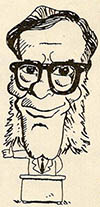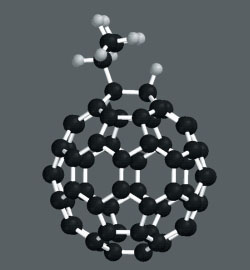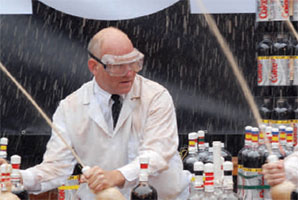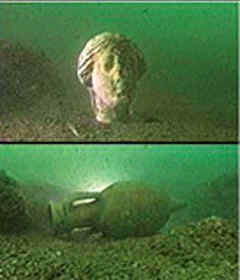
상온(常溫)핵융합에 관한 최근의 논쟁은 진보하는 과학에 있어 매우 흥미있는 예의 하나이다. 일부 실험에서는 확인을 하고 있으나 그렇지 못한 경우도 있다. 이것이 과학의 진면목인가? 떠들석한 다툼이나 분노에 찬 비난 또는 반박이 있기 마련인가?
때때로 그렇다. 과거에도 이런 류의 일은 수다히 많았는데 몇가지 사례를 간추려 볼 수 있을 것이다.
1984년부터 미국 천문학자 '퍼시벌 로웰'은 자신이 '아리조나'사막에 지은 관측소에서 화성을 열심히 관찰하였다. 그는 화성표면이 엷은 띠들로 뒤덮혀진 것을 본 것으로 생각했다. 그는 이 띠들을 '운하'라고 풀이했다. 그는 화성에는 매우 진화되고 기술적으로 뛰어난 지능인이 살고 있으며 이들은 점차 줄고 있는 화성의 물을 보충하기 위해 관개용으로 극지(極地)의 얼음을 사용하고 있다고 믿게 되었다.
로웰은 자기 견해를 뒷받침할 책들을 썼으며 H.G. 웰즈는 그의 인기있는 과학 픽션 '우주전쟁'을 집필할 때 로웰의 관측결과에서 영감을 얻기도 했다. 일반 대중은 이 드라마에 매혹되고 화성에는 운하가 있다고 믿게 되었다.
그러나 대부분의 천문학자들은 운하를 발견하지 못했다. 반대의견은 점차 거세어졌고 1964년 로켓탐사선에 의한 화성표면의 근접사진은 이 논쟁에 종지부를 찍어주었다. 운하는 없었던 것이다. 로웰은 관측의 한계점에서 들어나는 어떤 흔적들한테 속게 된 것이다. 그가 믿어버렸던 것은 광학(光学)적인 환상에 불과했다. 믿고 싶은 것이 사실로 드러나지는 않았던 것이다.
또 다른 예. '빌헤름 콘라드 뢴트겐'은 1895년 X선을 발견했으며 세계적 명성을 얻고 노벨상을 탔다. 다른 물리학자들도 유사한 발견을 하려고 바랬다.
1903년 프랑스 과학자 '르네 P. 브롱로'는 성공했다고 확신했다. 그는 신비스런 N-선(N는 그의 고향 낭뜨에서 따온 것)을 찾아냈으며 매우 탐지하기가 어렵지만 가까스로 자기는 보았다고 보고했다. 다른 사람들도 그의 실험을 열심히 반복하고 확인했다. 특히 프랑스에서. 수백편의 논문들이 N-선에 관해 발표되었다. 그리고 어떤 경우에 N-선이 분리되며 어떤 경우에 안되는지에 관한 관찰이 보고되었다.
그러나 영국이나 독일 미국의 학자들은 N-선을 찾는 데 실패했으며 때로 양측에서 국민적 편견이 가세된 비난이 오고갔다.
미국의 물리학자 '로버트 W.우드'는 '블롱로'의 실험실을 방문했고 실험과정을 보게 되었다. 그는 탐색장비의 중요부분을 몰래 챙겨 넣었으며 실험실 사람들은 아무것도 모른 채 N-선을 찾는 실험을 했다.
'우드'가 자기가 한일을 보고하자 N-선 논쟁은 완전히 사그러들었다. '블롱로'가 불성실한 사람이라고 생각할 이유는 없다. 그는 단지 뢴트겐의 발견과 같은 중요한 발견을 하려고 너무나 원했으며 그 결과 단지 자기가 보기를 원했던 것을 보았다고 착각한 것 뿐이다. 허나 바란다고 해서 현실로 실현되는 것은 아니다.
1962년 소련물리학자 '보리스 V.데리야진'은 '폴리워터'의 존재를 보고했다. 이것은 매우 엷은 관(管)에서 발견되는 새로운 형의 물로서 분자들은 비정상으로 밀착되어 있다는 것이다. 폴리워터는 보통의 물보다 1.4배나 점도가 높고 100℃가 아닌 500℃에서 끓는다는 것이다. 매우 흥미있는 얘기였다.
즉각 전세계 화학자들이 '데리야진'의 실험을 반복했고 폴리워터를 보았다. 아마도 폴리워터는 세포내에서 중요한 역할을 했을 것이다. 흥분은 대단했다.
그러나 폴리워터는 단지 유리관으로부터 규산염을 용해시킨 보통의 물인 것 같다는 보고들이 화학실험실에서 새어나오기 시작했다. 요컨대 폴리워터는 불순물(水)일 따름이라는 것. 다시 조사가 진행됐으며 거의 한꺼번에 폴리워터소동은 잠잠해지고 사라져버렸다. 이 경우도 또한 극적인 소동에 휘말린 예의 하나이다. 역시 바란다고만 해서 되는 것은 아니다. 그러나 모든 극적이고 믿을 수 없는 발견들이 이런 식의 허무로 끝나는 것은 아니다.
1938년 독일 물리학자'오토 한'은 중성자로 우라늄 충격실험을 하다가 우라늄원자가 반으로 쪼개진다고 결론짓게 되었다. 허나 이것은 너무 엄청난 것이어서 그는 감히 보고를 하지 못하고 있었다. 그러나 그의 연구 동료였으며 유태인이라는 죄 때문에 스웨덴에 망명하고 있던 '리제 마이트너'는 보다 용기가 있었다. 그녀는 핵분열의 가능성을 보고했고 이 소식은 미국의 과학회의에 참석하기 위해 떠나려 하던 '닐스 보어'에게 전해졌다. '보어'는 소식을 미국 학자들에게 알려줬으며 미국인들은 즉각 실험을 해보고 핵분열을 확인했다. 이 경우는 터무니 없고 극적인 생각이 진실로 나타난 것이다.
이제 상온 핵융합은 어느 쪽이 될까? 만약 상온 핵융합이 실제 있을 수 있고 또 응용된다면 인류에게 엄청난 선물이 될 것이다. 무한의 그리고 깨끗한 에너지를! 가능성을 믿고자 하는 마음은 대단한 것이다. 핵융합에는 실패했지만 물리학자들이 30년 동안 값비싼 실험을 계속해온 드라마가 있다. 그리고 이번에 두 화학자가 적은 비용으로 성공했다고 하는 것이다.
이들이 정말 성공했기를 어찌 바라지 않을 수 있으랴?
The current controversy over cold fusion is a very exciting example of science in progress. Some investigations confirm it; other investigations don't. There is excitement on one side; denunciation on the other. Is that the way science works? Loud squabbling? Angry accusations and rebuttals?
Sometime, yes. There have been numerous cases of this sort of thing in the past, and we can outline a few.
Beginning in 1894, the American astronomer Percival Lowell examined Mars assiduously at an observatory he had built in the Arizona desert. It seemed to him that he saw the surface of Mars covered with thin straight lines, which he interpreted as "canals." He was convinced that Mars harbored a highly evolved, technologically advanced intelligence that was combating the slow loss of Mars' water by using the polar ice caps as a source of irrigation.
Lowell wrote books upholding his thesis, and H.G. Wells used Lowell's observations as an inspiration for his popular science fiction book "The War of the Worlds." The general public, excited by the drama, believed in the canals.
However, most astronomers failed to see the canals. The opposition grew stronger and stronger and in 1964, close up photographs of the Martian surface by a rocket probe settled the matter. There were no canals! Lowell was fooled by markings near the limits of visibility. It was an optical illusion that he wanted strongly to believe, but wishing didn't make it so.
Another case. Wilhelm Konrad Roentgen had discovered X-rays in 1985 and won worldwide fame and a Nobel Prize. Other physicists longed to make similar discoveries.
In 1903, a French scientist, Rene P.Blondlot, was convinced he had. He reported certain mysterious "N-ray" (N for Nancy, his native city) that were very difficult to detect, but which he managed to see. Others excitedly repeated his experiments and confirmed them, especially in France. Hundreds of papers were churned out about N-rays and all sorts of observations were made as to when N-rays were "liberated" and when they were not.
However, most scientists in Great Britain, Germany and the United States failed to detect the N-rays and there were occasional recriminations based on national prejudice on both sides. An American physicist, Robert W. Wood, visited Blondlot's laboratory and was shown the procedures. Wood secretly pocketed an essential portion of the detecting device, but the experimenters innocently proceeded to detect the N-rays anyway.
Once Wood reported what he had done, the whole N-ray controversy collapsed. There is no reason to think Blondlot wasn't sincere. It was just that he wanted so much to make a discovery as important as Roentgen's, that he saw what he wanted to see. However, wishing didn't make it so.
In 1962, a Soviet physicist, Boris V.Deryagin, reported the exitence of "polywater." This was a new form of water that was found in very thin tubes. The molecules were abnormally close together. Polywater was 1.4 times as dense as ordinary water, and boiled at 500 C. instead of 100 C. It was all very exciting.
Instantly, chemists all over the world began repeating Deryagin's work and behold, they found polywater, too. Perhaps polywater played an important role inside the cell. The excitement was intense.
But then reports filtered out of chemistry laboratories that polywater might be ordinary water that had dissloved silicate out of the glass tubes holding it. In short, polywater might be impure water. Again, there were investigations, and almost at once, the polywater phenomenon collapsed and disappeared. It was another case of excitedly plunging for the dramatic-but wishing didn't make it so.
However, that isn't always the case with all dramatic and unbelievable discoveries. In 1938, the German physicist Otto Hahn, who had been bombarding uranium with neutrons, had decided the uranium atom was breaking in half (uranium fission) but this was so outlandish a notion that he didn't dare report it. However, his ex-partner, Lise Meitner, in exile in Sweden for the crime of being Jewish, was braver. She reported the possibility and the news was given to Niels Bohr, who was on his way to the United States to attend a scientific conference. He passed it on to American physicists, who instantly repeated the experiments and confirmed the existence of nuclear fission. This time the wild and dramatic notion was true.
Well, now which is it to be for cold fusion? After all, if cold fusion really exists and can be exploited, it would be an enormous gift to all of humanity. Unlimited, clean energy! The will to believe is tremendous. There is the drama of 30 years of highly expensive experiments by physicists failing to achieve fusion, and then two chemists succeeding on a shoestring. How can we help wanting those two to succeed?
(c) 1989, Los Angeles Times Syndicate

















